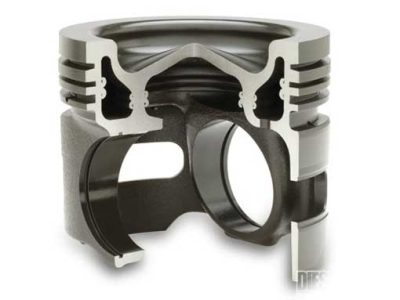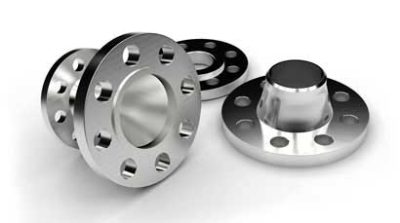Produktkategorier
Produkt Tags
CNC-værktøjsmaskiner til behandling af flydele
Ved bearbejdning på en CNC-værktøjsmaskine, manuel værktøjsstyring er ikke påkrævet, og automatiseringsgraden er høj. Fordelene er indlysende.
⑴ Reducerede tekniske krav til operatører:
En seniorarbejder af almindelige værktøjsmaskiner kan ikke dyrkes på kort tid. Imidlertid, uddannelsestiden for en CNC-medarbejder, der ikke har behov for programmering, er meget kort (for eksempel, en CNC drejebænk har kun brug for en uge, og han vil skrive simple behandlingsprogrammer). Ud over, de dele, der behandles af CNC-arbejdere på CNC-værktøjsmaskiner, har højere præcision end dem, der behandles af almindelige arbejdere på traditionelle værktøjsmaskiner, og det tager kortere tid.
The main processing objects of CNC machine tools are aircraft parts with complex profiles, which solves the key equipment that is difficult to solve by ordinary processing methods. The biggest feature of CNC machining is the use of punched tape (or tape) to control the machine tool for automatic processing. Because airplanes, rockets and engine parts have different characteristics: Aircraft and rockets have large components, large size and complex shapes; Engine zero, small component size and high precision. Derfor, the CNC machine tools selected by the aircraft and rocket manufacturing departments and the engine manufacturing departments are different. Large-scale CNC milling machines with continuous control are mainly used in aircraft and rocket manufacturing. In engine manufacturing, both continuous-control CNC machine tools and point-control CNC machine tools (such as CNC drilling machines, CNC boring machines, machining centers, etc.) are used.
Process concentration
CNC machine tools generally have tool holders and tool magazines that can automatically change tools. The tool change process is automatically controlled by the program, so the process is relatively concentrated. Process concentration brings huge economic benefits:
⑴ Reduce the floor space of the machine tool and save the workshop.
⑵ Reduce or eliminate intermediate links (such as intermediate inspection of semi-finished products, temporary storage and handling, etc.), which saves time and labor.
automatisering
Ved bearbejdning på en CNC-værktøjsmaskine, manuel værktøjsstyring er ikke påkrævet, og automatiseringsgraden er høj. Fordelene er indlysende.
⑴ Reducerede tekniske krav til operatører:
En seniorarbejder af almindelige værktøjsmaskiner kan ikke dyrkes på kort tid. Imidlertid, uddannelsestiden for en CNC-medarbejder, der ikke har behov for programmering, er meget kort (for eksempel, en CNC drejebænk har kun brug for en uge, og han vil skrive simple behandlingsprogrammer). Ud over, de dele, der behandles af CNC-arbejdere på CNC-værktøjsmaskiner, har højere præcision end dem, der behandles af almindelige arbejdere på traditionelle værktøjsmaskiner, og det tager kortere tid.
⑵ Reduce the labor intensity of workers: In the machining process, most of the time CNC workers are excluded from the machining process, which is very labor-saving.
⑶ Stable quality of processed parts:
The processing automation of CNC machine tools eliminates the fatigue and carelessness of workers on ordinary machine tools and improves the consistency of products.
⑷ High processing efficiency:
The automatic tool change of CNC machine tools makes the processing process compact and improves labor productivity.
High flexibility of machined parts
Although the traditional general-purpose machine tool is flexible, its efficiency is low; Although traditional special planes are highly efficient, they have poor adaptability to parts, høj stivhed, and poor flexibility, gør det vanskeligt at tilpasse sig hyppige produktændringer forårsaget af hård konkurrence i markedsøkonomien. Så længe programmet er ændret, nye dele kan bearbejdes på CNC-værktøjsmaskinen, og det kan automatiseres, med god fleksibilitet og høj effektivitet. Derfor, CNC-værktøjsmaskinen kan tilpasse sig konkurrencen på markedet.
Stærk evne til at bearbejde dele
Værktøjsmaskinen kan nøjagtigt behandle forskellige konturer, og nogle konturer kan ikke bearbejdes på almindelige værktøjsmaskiner. CNC-værktøjsmaskiner er særligt velegnede til følgende lejligheder:
1. Dele, der ikke må skrottes.
2. Udvikling af nye produkter.
3. Behandling af akut nødvendige dele.
Bearbejdningsprincipper for præcisionsdele
⑴ Bearbejdningen af den forrige proces kan ikke påvirke positioneringen og fastspændingen af den næste proces.
⑵ Inside first, then outside, det er, the inner cavity (inner hole) is processed first, and then the shape is processed.
⑶ Processing procedures with the same installation or using the same tool should be carried out continuously to reduce errors caused by repositioning or tool change.
⑷ In the same installation, the process that has little effect on the rigidity of the workpiece should be carried out first.
Processing route of precision parts
The feed processing route of CNC lathe refers to the path that the turning tool moves from the tool setting point (or the fixed origin of the machine tool) until it returns to this point and ends the processing program. Including cutting paths and non-cutting idle paths such as cutting in and cutting out of the tool. The feed path of finishing is basically carried out along the part contour sequence. Derfor, the focus of determining the feed route is to determine the feed route for rough machining and idle stroke. In CNC lathe processing, the determination of the processing route generally follows the following principles.
① The accuracy and surface roughness of the processed workpiece should be guaranteed.
② Make the processing route the shortest, reduce the idle travel time, and improve the processing efficiency.
③ Try to simplify the workload of numerical calculation and simplify the processing procedure.
④ For some reusable programs, subroutines should be used.
Making the machining program have the shortest feed route can not only save the execution time of the entire machining process, but also reduce unnecessary tool consumption and wear of the sliding parts of the machine tool’s feed mechanism. The type and realization method of the shortest feed path are as follows.
⑴ The shortest cutting feed route. The shortest cutting feed path can effectively improve production efficiency and reduce tool loss. When arranging the shortest cutting feed route, it is also necessary to ensure the rigidity of the workpiece and the requirements of processing technology.
⑵ The shortest NC empty travel route.
① Use the starting point skillfully. An example of the general situation of rough turning using rectangular loop method. The setting of tool setting point A is to take into account the need for convenient tool change during finishing turning and other processing, so it is set at a position far away from the blank, og på samme tid, the starting point and the tool setting point are overlapped
② Ingeniously set the tool change point. In order to consider the convenience and safety of tool change, sometimes the tool change point is also set at a position far away from the blank. Så, when the second tool is changed, the idle stroke path during fine turning must be longer; If the tool change point of the second tool is also set at the mother point position in the middle, the idle stroke distance can be shortened.

præcision cnc-bearbejdning af flydele

Process of machining aluminum engine cavity

cnc milling molybdenum aircraft parts

Processing Technology of Ship's Automatic Miniature Titanium Parts
③ Reasonably arrange the "return to zero" route. In order to simplify the calculation process and facilitate the verification when manually compiling the processing program of the complex contour, the programmer sometimes sets the end point of the tool after each cut. By executing the "return to zero" operation instruction, all of them return to the position of the tool setting point, and then execute the subsequent program. This will increase the distance of the feed path and reduce production efficiency. Derfor, when rationally arranging the "return to zero" route, the distance between the end of the previous cut and the start of the next cut should be as short as possible. Or zero to meet the shortest feed path requirement. Ud over, when selecting the command to return to the tool setting point, under the premise of no interference, use the x and z axis bidirectional “zero return” command as much as possible. The function "return to zero" route is the shortest.
⑶ Step cutting feed route of large margin blank. Lists two cutting feed routes for blanks with too much margin. It is a wrong step cutting route, cut in the order of 1→5, and the margin left for each cutting is equal. It is the correct step cutting feed route. Because under the same amount of knife back.
⑷ Continuous cutting feed route for finishing part contour. The finishing of the contour of the part can be arranged with one or several finishing processes. The final contour is completed by the last continuous machining. På dette tidspunkt, the advance and retreat position of the tool should be selected appropriately, og prøv ikke at arrangere skæring og udskæring eller værktøjsskift og pause i en kontinuerlig kontur. For ikke at ødelægge balancen i processystemet på grund af pludselige ændringer i skærekraften. Giver ridser, formændringer eller fastholdte værktøjsmærker på delens kontur.
⑸ Speciel foderrute. I CNC-drejebearbejdning, generelt. Værktøjets langsgående fremføring føres langs koordinatens negative retning, men nogle gange er det urimeligt at arrangere fodervejen i den normale negative retning. Det kan endda beskadige emnet.
CNC-bearbejdning har følgende fordele:
① Antallet af værktøj er stærkt reduceret, og kompleks værktøj er ikke påkrævet for at behandle dele med komplekse former. Hvis du ønsker at ændre formen og størrelsen på delen, du behøver kun at ændre delbearbejdningsprogrammet, som er velegnet til udvikling og modifikation af nye produkter.
② Behandlingskvaliteten er stabil, behandlingsnøjagtigheden er høj, og gentagelsesnøjagtigheden er høj, som er egnet til forarbejdningskravene til flydele.
③ Højere produktionseffektivitet i tilfælde af flere sorter og små batchproduktion. Kan reducere produktionsforberedelse, værktøjsmaskinejustering og procesinspektionstid, og reducere skæretiden på grund af brugen af den bedste skæremængde.
④ Det kan behandle komplekse overflader, der er vanskelige at behandle med konventionelle metoder, og endda behandle nogle uobserverbare bearbejdningsdele. Ulempen ved CNC-bearbejdning er, at omkostningerne til værktøjsmaskiner er dyre og kræver et højt niveau af vedligeholdelsespersonale.
Kontakt os
Venter på din e-mail, vi vil svare dig inden for 12 timer med værdifuld information, du havde brug for.
 English
English العربية
العربية 中文(漢字)
中文(漢字) Čeština
Čeština Dansk
Dansk Nederlands
Nederlands Suomi
Suomi Français
Français Deutsch
Deutsch Italiano
Italiano 日本語
日本語 ಕನ್ನಡ
ಕನ್ನಡ 한국어
한국어 Português
Português Русский
Русский Slovenčina
Slovenčina Español
Español Svenska
Svenska Türkçe
Türkçe





